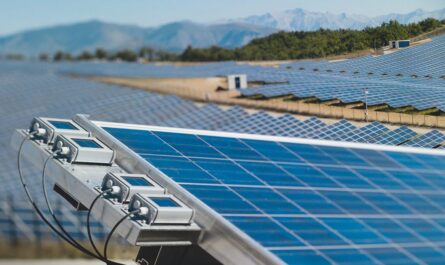AWPs have become essential tools for a wide range of industries over the past few decades. Their versatility and ability to safely reach previously inaccessible heights has transformed how construction and maintenance work is carried out. In this article, we take an in-depth look at AWPs and explore how they are reshaping the modern workplace.
A Brief History
The first vertical lift trucks, which served as early predecessors to modern AWPs, were developed in the 1950s. These trucks featured telescopic or articulating booms that allowed operators to reach higher levels on buildings and structures. Throughout the 1960s and 1970s, advancements in engineering and manufacturing led to improvements in stability, positioning accuracy and overall safety. By the 1980s, manufacturers were producing articulated boom lifts, scissor lifts and other configurations that offered even greater access to complex work areas high above the ground. Today, there are many types of AWPs available to suit an extensive range of jobsite needs.
Categorizing AWP Models
Based on their designs and lifting capabilities, Aerial Work Platforms generally fall into several main categories:
Articulated Boom Lifts: Very versatile machines with telescoping booms that can configure horizontally and vertically. They provide optimal positioning for tasks like window washing or equipment installation. Articulated booms have working heights up to 120 feet or more.
Scissor Lifts: Ideal for indoor applications, scissor lifts feature two sets of crisscrossing structures (‘scissors’) that extend straight up and down. Scissor lifts reach heights around 40 feet and are perfect for installing or maintaining suspended ceilings, lighting systems, and HVAC equipment.
Telescopic Boom Lifts: Extendible single booms that lift straight up from a rotating platform, telescopic booms afford great close-range precision from heights up to 130+ feet. They are commonly used for inspections, maintenance of cell phone towers and wind turbines.
Platform Lifts: Simple elevated work platforms appropriate for basic tasks up to 40 feet. Platform lifts feature non-articulating setups ideal for landscaping or pool maintenance professionals.
Vertical Personnel Lifts: Vertical-rise lifts are useful for internal applications like warehouse inventory tasks, where raising and lowering inside narrow spaces is needed. Maximum heights are around 60 feet.
Benefits in Construction and Maintenance
The introduction of AWPs has enabled construction workers and facility managers to perform tasks more efficiently, economically and safely compared to traditional means like ladders or scaffolding. Some key benefits AWPs provide include:
Safer Access – Falls from heights are a major cause of construction incidents. AWPs eliminate the dangers posed by ladders or unprotected edges when working overhead. Their guardrails, fall arrest anchors and restraint systems enhance worksite safety significantly.
Reach Complex Areas – AWPs allow accessing areas that were previously inaccessible such as the upper floors of buildings under construction. Their articulating designs let operators precisely position platforms near windows, roof edges or other confined work zones.
Productivity Boost – Tasks like installing siding, glazing windows and positioning HVAC units can be completed much faster from an elevating work platform versus with ladders. Crews waste less time moving portable equipment in and out.
Cost Savings – The upfront investment in an AWP pays for itself through increased efficiency and reduced costs from lost-time accidents. When factoring in medical expenses, incident investigations, downtime and fines from safety violations, not owning an AWP ends up more expensive long-term.
Zero Footprint – Unlike scaffolding that requires assembling, disassembling and large on-site footprints, AWPs can be moved in and out of tight spaces easily. This allows continuous work through different phases of a project without delays from dismantling intermediate supports.
Applications across Many Industries
Thanks to their mobility and flexibility, AWPs find wide usage beyond construction sites. Other key sectors benefiting from them include:
– Infrastructure Inspection and Maintenance: Bridges, highways, pipelines, utilities etc. are examined by lift technicians from elevated platforms.
– Facilities Management: AWPs simplify indoor/outdoor maintenance of large buildings, arenas, warehouses and other structures like washing windows, servicing lighting or mechanical equipment.
– Tree Trimming & Landscaping: Arborists and landscapers leverage AWPs to safely trim high branches or install decorative lighting without risky climbing.
– Events & Entertainment: Stage rigging, lighting/sound installations at concerts, conventions and theaters are completed efficiently through aerial platforms.
– Telecommunications: Cell towers, broadcast towers and telephone poles require periodic inspection and maintenance performed from lift work baskets.
– Wind Energy: Both onshore and offshore wind farms depend on AWPs for turbine blade repairs, generator inspections and transmission line upkeep tasks high above the ground.
As the complexity and height of construction projects increase worldwide to accommodate growing populations, aerial lifts will become even more indispensable tools sustaining safe, productive building activities. Their applications across an array of industries highlight how far worksite accessibility has come thanks to continued aerial work platform innovations.



